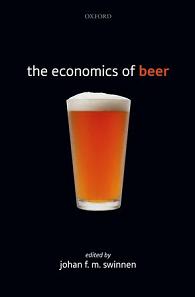
I have been playing around with some passages on Toronto in the first years of the 19th century. Here is what I started with:
⇒ “A recent Fact will corroborate what I have said; A Brewer from Kingston removed to York lately and, on application to the Governor, obtained one of the King’s vessels to transport wheat and other Grain from Kingston and the Bay of Quintie, before beer coud be made – and almost all the Pork, Beer, Butter, Flour, Hams, Mutton, which are used at York are brought by water, from Kingston, Niagara, the Genesee Counttry, &c &c. – In short the Town is supported by the money which the Gentlemen who have Salaries from Government expend in Buildings & other Improvements; and that source begins to fail.“: Letter, Rev John Stuart to the Bishop of Nova Scotia, Kingston, September 14, 1801.
⇒ “Even in 1815, after the establishment of two neighbourhood breweries, Commissariat General Robinson was obliged to buy 8,347 gallons of beer and liquors from Kingston for the men at the cost of L8,800“: Bowering, page 9.
⇒ “York Brewery, southeast corner of Duchess and Sherbourne (Caroline) Streets, 1800-1805. Just when the first commercial brewery in York, and who the brewmaster was may never be known… This brewery may have been operated by Robert Henderson in a notice of sale dated 1809, Henderson advertised a milling plant, brewhouse, working tubs, coolers, two kilns for drying malt, two good wells or water, a stable,” two stills, a townhouse, slaughterhouse and three acres of land“: Bowering, page 91.
⇒ “1805 – Upper Canada – Robert Henderson establishes York’s (Toronto’s) first brewery. It closed 12 years later and the facility was leased by different brewers until 1853“: Sneath, page 329.
So you see there is some question as to when a brewery was first built in Toronto – or what was then York… but then I also remembered In Mixed Company by Roberts and how there was a chapter about an early tavern keeper who kept a diary. Turns out it was written in 1802-02 and turns out she gives the address for the tavern – the corner of King and Caroline Streets. Which made me look up above again and see that Bowering gave an address as well.
 Over time Duchess is now Richmond and Caroline did become Sherbourne but that is enough to dip into the City of Toronto’s historical maps and atlases online collection and – voila. We have the information above. Which also means we can figure out where these spots are today which you will see if you click on that little thumbnail.
Over time Duchess is now Richmond and Caroline did become Sherbourne but that is enough to dip into the City of Toronto’s historical maps and atlases online collection and – voila. We have the information above. Which also means we can figure out where these spots are today which you will see if you click on that little thumbnail.
Roberts explains that the Toronto of Playter’s diary and the founding of its first brewery had 75 to 100 homes and about 320 inhabitants in town, about 420 in the surrounding country as well as about 240 in the military garrison to the west. Both establishments sit in what is even then called Old Town. It’s the administrative capital of the new colony of Upper Canada. Roberts also indicates that drinking in Playter’s included rum, “sling” and punch as well as whiskey, brandy and wine. No beer is mentioned that I see.
I would love to have a read of the diary but, if we think of that letter from Rev. Stuart above, we might quess that early York is something of a Brasilia, a constructed government town. The kind of place that you had wine over beer. Not Stuart’s sort of place. No, he was a beer man. One of the founders of my town, his beer tankard is now owned by the people of Canada. He may well have had many an ale from Albany in it. He was a personal pal of Sir William Johnson, both backwoods leaders in central New York before the Revolution, home of our loyalists, beer drinkers there and in what becomes Ontario a decade before the colonial softie government officials show up in York.







 Over time Duchess is now Richmond and Caroline did become Sherbourne but that is enough to dip into the City of Toronto’s historical maps and atlases
Over time Duchess is now Richmond and Caroline did become Sherbourne but that is enough to dip into the City of Toronto’s historical maps and atlases 